| Main | Location | Transportation | History | Photos | Contact Us | About |
| Main | Location | Transportation | History | Photos | Contact Us | About |
In 1300 a.d. Koutalis used to be a naval base of Catalonians
(Spain) by permission of Byzantine Emperor Andronikos the 2nd.
This ended in 1307 and the Greeks, mainly fishermen and ship owners
settled in the island.
During the period of Ottoman Empire most ships from Koutalis sailed through the Aegean and Mediterranean Seas to Europe, especially Italy, France, Spain and England bringing to Istanbul merchandise from these countries. Other ships went fishing and traded fish in the Sea of Marmara. This trade extended up to the Romanian and Russian Coasts, from where the people of Koutalis were provided with wheat. In the windmills - the ruins of which still exist - the wheat from Romania, Russia, even from Marmara or Kizikos (Erdek) was grounded to flour.

 A Windmill Ruin on Cape Marmara in Early 1980's |
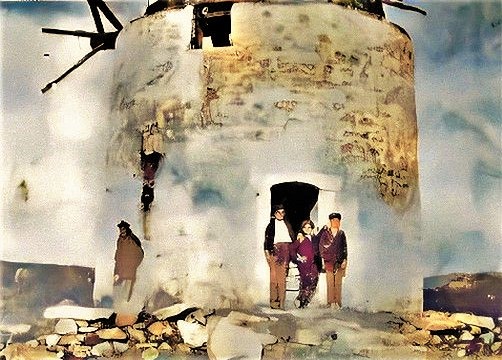 Another Windmill in Threshing Area in Eearly 1920's |
Later, in 1816 a number of ships was changed to sponge-fishing boats. In 1900 there were 25 vessels (over 200 tons) and 30 sponge-fishing boats of 4 tons and of 8 person crew each in Koutalis. Of course, this fleet was anchored at the port of Istanbul. The picture below shows sponge fishermen in the beginning of the 20th century.

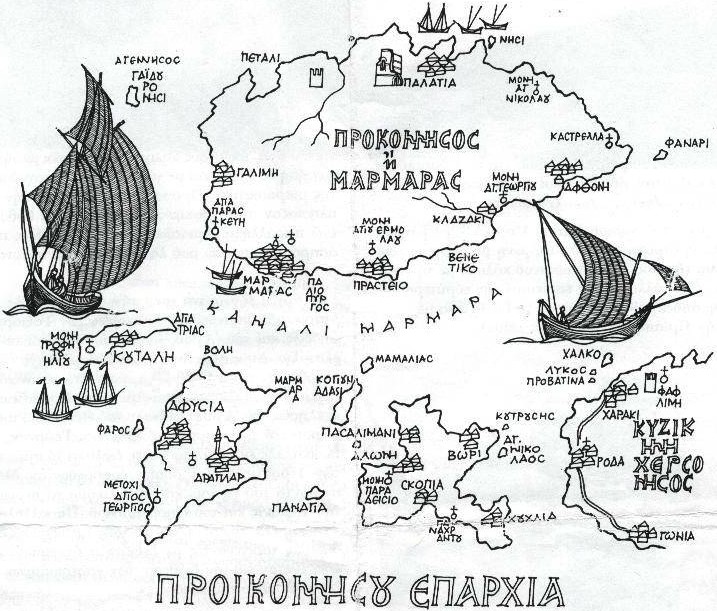
There were shops which sold clothes, food, houseware etc and 3 or 4 cafe - restaurant on the beach.
The main occupation of people of Koutalis was commercial shipping, sponge-fishing, fishing and the trade of salted fish. The picture below shows a laboratory of salted fish in the beginning of the 20th century.
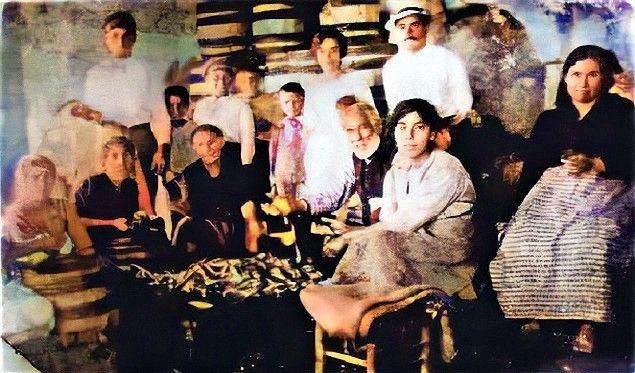
Before 1896, Koutalis' population was 2.400. There was a school of 110 students. The ruins of this school and the church next to it still exist. The figure below shows the style of dressing of a mother taking her child to school in that era.

Below there is a copy of a birth-certificate of Nikos born in Koutalis in 1918. It was given by Ottoman Empire. (You can click the picture for more details)
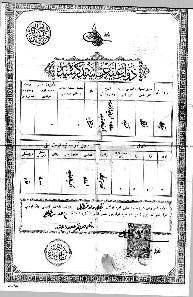
The picture below shows Panagis Koutalianos born in Koutalis, who became prominent with his strength at the last quarter of 1800's. ( You can click the picture for more details)
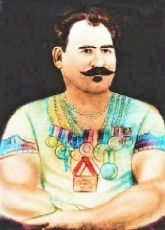
In 1923, with the establishment of Turkish republic the people of Koutalis -like other people of Greek origin- left their homes and came to Greece as refugees. Some people of the old Koutalis built the New Koutalis on Lemnos Island. Others came to Athens, others to Salonica, Piraeus, and a large number of them left for the U.S.A.
After the people of Greek origin left the island, the island was deserted and unprotected for 5-6 years. During this time, the buildings in the island were plundered.
Then, the Turkish government settled 30 households from Inebolu ( an establishment in north-western Anatolia) in the island. The settlers found the island in ruins. They get established in the buildings in good-condition and they used the wooden parts of the other buildings for heating.
The earthquake with 6.4 magnitude; in Marmara Sea ( center is approximately 9 km to the island) destroyed all the unused ill-conditioned houses and most of the other buildings.
The islanders were very poor in those times. They went fishing with little boats, grew grapes and worked with soil. After 1960's, some of the islanders acquired boats which is used for getting sand from the sea and their economic situation started to improve.
In time, the islanders started to live and work in big cities in winter and come to island for holiday in summer. In 1970's, there were a school, a hotel and a salted-fish workshop which were going to be closed later.
In the beginning of 1980's, the island has been electrified systematically and so the development of the island has speed up.